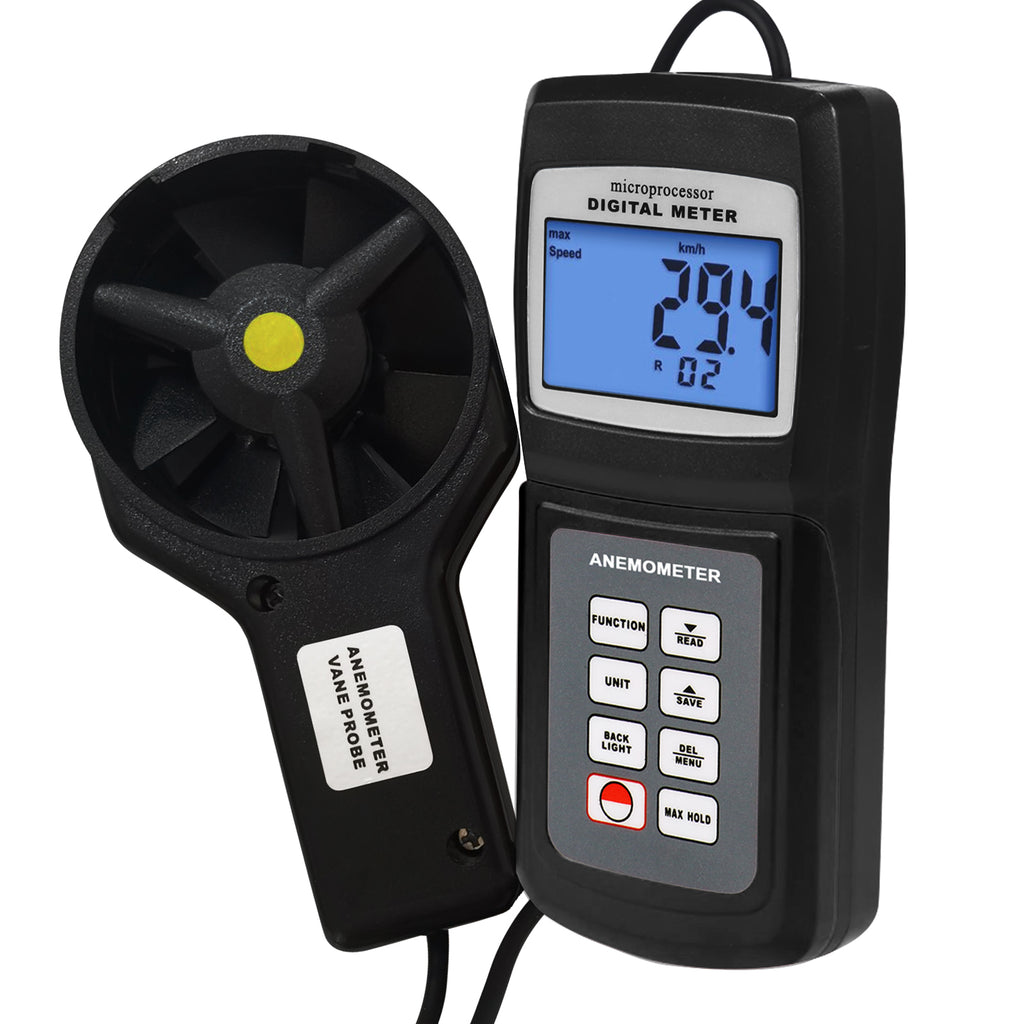How an Anemometer Can Enhance Your Weather Monitoring System
All You Need to Learn About Anemometers: How They Function, Why They Matter, and Where to Use Them
Anemometers, though commonly neglected in the world of clinical instruments, play a vital duty in various fields, supplying important insights right into wind rate and air flow patterns. As we dive right into the intricacies of anemometer innovation, we will certainly reveal the internal functions of these gadgets, their relevance, and the vital considerations when choosing the appropriate anemometer for particular applications.

Anemometer Basics
A crucial instrument used to gauge wind rate and direction, the anemometer plays an essential function in weather forecasting and different industries. An anemometer usually includes three or 4 mugs that turn in the wind, a vane that points into the wind, and sensing units to track the turnings or motions. By calculating the turnings or motions over a specific amount of time, the anemometer can figure out wind speed. The vane assists establish wind direction by pointing right into the wind, supplying useful data for climate forecasting, aviation, maritime procedures, environmental surveillance, and wind energy applications.
There are numerous sorts of anemometers readily available, including mug anemometers, vane anemometers, hot-wire anemometers, and sonic anemometers, each with its unique functions and applications. Mug anemometers are typically made use of for basic wind rate measurements, while vane anemometers are liked for directional measurements. Hot-wire anemometers are appropriate for reduced airspeeds, and sonic anemometers are suitable for high-precision measurements in research study and industrial settings. Recognizing the essentials of anemometers is crucial for accurate wind data collection and analysis throughout different markets.
Concepts of Anemometer Operation
Structure on the fundamental understanding of anemometer essentials, the concepts of anemometer procedure clarify the auto mechanics behind wind speed and direction dimensions. Cup anemometers, for instance, have 3 or even more cups that record the wind, triggering them to spin much faster as the wind rate increases. Hot-wire anemometers rely on a warmed cable that cools down as wind passes over it, with the rate of cooling determining the wind rate.
Value of Anemometers
The value of anemometers in weather forecasting and numerous sectors can not be overstated. Anemometers play a vital function in determining wind rate and direction, providing important information for climate forecasting, environment research studies, environmental monitoring, and aeronautics operations. Meteorologists depend on anemometers to collect accurate wind data, aiding them understand climate patterns, predict storms, and problem prompt warnings to the general public. In industries such as building and construction, agriculture, renewable resource, and maritime operations, anemometers are utilized to maximize procedures, guarantee safety and security, and enhance performance. Wind farm operators utilize anemometers to assess wind problems and make the most of power production from wind turbines. In the maritime field, anemometers aid ship navigating by giving real-time wind details to captains, assisting them make educated decisions to make sure risk-free trips. Generally, anemometers are indispensable devices that add considerably to security, performance, and educated decision-making in weather forecasting and a large range of markets.
Applications Across Various Industries
Applications of anemometers span throughout diverse sectors, showcasing their convenience and energy beyond meteorology. In the renewable resource field, anemometers play a crucial role in analyzing wind problems for wind farm placements, making certain ideal energy manufacturing. Industries like building and construction and mining utilize anemometers to monitor wind rates, important for safety and security methods, specifically when working at elevations or in open-pit mines where solid winds can pose dangers. Anemometers are additionally integral in the aeronautics sector, aiding pilots in recognizing airspeed and wind direction for safe liftoffs and touchdowns. The maritime field benefits from anemometers for ship navigation, aiding seafarers prepare for weather condition changes and adjust routes accordingly. In farming, anemometers assist farmers in handling plant spraying by supplying real-time information on wind rate to avoid drift. In addition, anemometers find applications in HVAC systems to optimize air flow and improve power performance in structures. The varied use cases of anemometers highlight their value throughout numerous industries, highlighting their vital duty in boosting functional safety and effectiveness (anemometer).

Selecting the Right Anemometer for Your Demands
For general purposes, a mug check it out anemometer is suitable for measuring wind rate, while a vane anemometer supplies wind direction information. Hot-wire anemometers are ideal for low airspeed dimensions, and ultrasonic anemometers offer high accuracy and durability.

Final Thought
In final thought, anemometers play a critical function in determining wind speed and instructions across numerous markets. It is important click to find out more to think about the relevance of anemometers in order to make educated decisions when choosing the most ideal tool for gauging wind conditions.
There are various kinds of anemometers offered, including mug anemometers, vane anemometers, hot-wire anemometers, and sonic anemometers, each with its one-of-a-kind functions and applications. Mug anemometers are generally used for standard wind rate measurements, while vane anemometers are chosen for directional dimensions. Hot-wire anemometers are ideal for reduced airspeeds, and sonic anemometers are perfect for high-precision measurements in research study and commercial setups.Structure on the fundamental understanding of anemometer essentials, the concepts of anemometer procedure clarify the technicians behind wind rate and instructions dimensions. For basic objectives, a mug anemometer is ideal for gauging wind rate, while a vane anemometer gives wind instructions information.